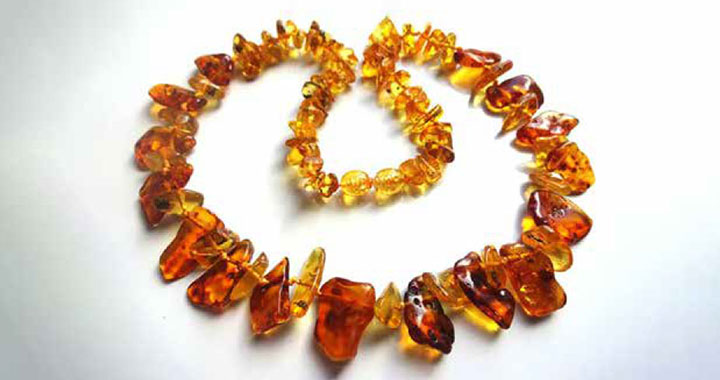To kick off this mini series of Halloween gems, amber is the chosen first. What could be more spooky than trapped insect containing deadly bacteria…

Prized for its deep rich and warm orange hue, amber is an organic gem, meaning that it is created from living or once living organism, it is fossilized tree resin dating tens of millions of years. It is composed of carbon, oxygen and hydrogen. Nicknamed “the gold of the North”, it is most commonly found on Northern Europe’s beaches, washed away with the ocean tides. It can also be dug from the ground and deposits have also been found in the Dominican Republic, Myanmar (Burma) and Mexico.
There is a distinction to be made between amber and copal amber. The latter refers to amber which fossilized less than a million years ago. But who’s counting!! It is also fossilized tree resin and is formed in the same manner. One cannot differentiate between the two using a magnifying glass, but rather by using “granny’s old tricks”. Some say that rubbing copal amber on the heel of your hand will emit a smell, others suggest a drop of acetone or even gasoline to determine copal from mature amber: amber is unaffected by acetone whereas copal softens the material. Either way, probably best to avoid doing at home and damaging one’s precious jewel!
Like with all gems, it takes very specific conditions to create amber. It takes a few million years for resin to harden. Once it has hardened it lays under sediment in an oxygen-free environment. It turns to copal amber. It then takes a few more million years to become more stable with the effects of heat and pressure applied to the copal amber to become amber. Research shows that the deposits found in the Baltic and Dominican Republic came from extended immersion under seawater.
Because of its relative softness – rating at 2/2.5 on the Mohs scale (talc powder rates at 1) – it is not commonly cut with facets, but rather polished into beads or free-form pieces.

Jewellery made of amber tend to be big pieces. The reason for it being the lightness of this gem, making it a perfect candidate to wear around one’s neck without feeling weighed down.
The most prized amber pieces are typically transparent, dark reddish hue. However, amber also comes in white and treatments to enhance colour can modify its appearance totally. Heat treatment and dying are commonly used to enhance amber and one distinct mark to look for are sun spangles. Heating amber can cause fracture-like marks: sun spangles.

Amber is a treasured gem because of the secrets they can unveil. The insects, fauna and animals they have sometimes captured tell a tale.



Inclusions play a huge part in the final value of amber but often if the inclusion is perfect, then it probably is too perfect to be real.
It can be extremely difficult to trust authentic amber with inclusions, such as this piece for sale on eBay for $129,000:

And this perfectly preserved scorpion, also on for sale at eBay for £4.90! :

When in doubt and spending a large amount, always ask for a report from a reputable laboratory.

Man-made or real, amber with insect inclusions make the perfect jewellery piece for trick or treating!
Aurélia has over twenty years’ experience in the auction industry. She started her career in Business Development and Client Services at Christie’s and Sotheby’s Paris.







